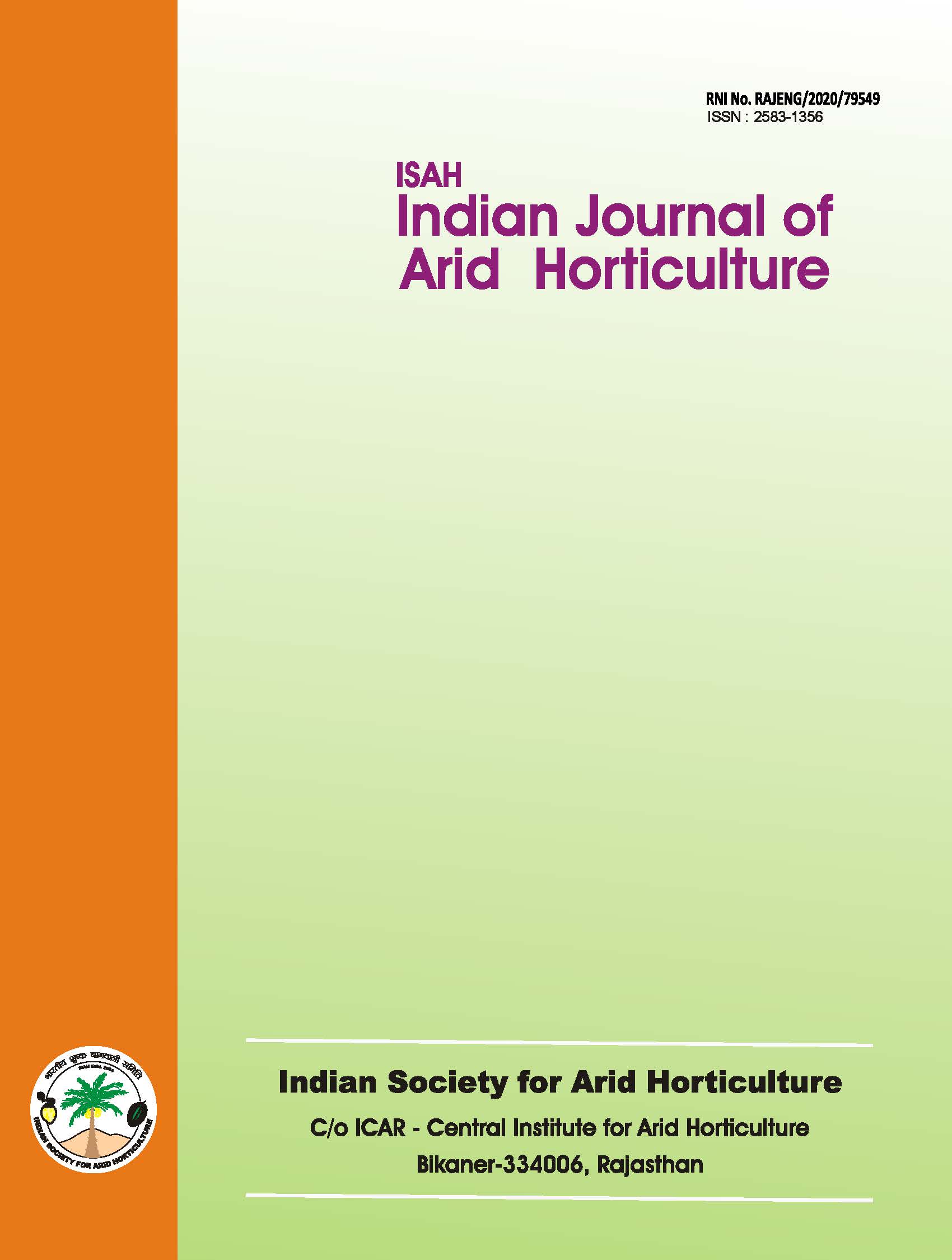Heterosis studies for yield and yield attributes over environments in brinjal (Solanum melongena L.)
Keywords:
hybrid, potential, segregants, exploitation, vigourAbstract
Brinjal is an important vegetable crop of India and is grown throughout the year. However, it is widely cultivated in both temperate and tropical regions of the globe mainly for its immature fruits as vegetables (Rai et al., 1995), but in the temperate regions it is cultivated mainly during summer season. India is regarded as the primary centre of origin/diversity of brinjal (Genabus, 1963). One of the methods employed is exploitation of hybrid vigour through hybridization. The first time, Bailey and Munson (1891) reported artificial hybridization in brinjal. However, none of the hybrids exhibited any heterosis. Nagai and Kida (1926) were probably the first to observed hybrid vigour in a cross combinations of some Japanese varieties of brinjal to obtain higher yield per unit area, exploitation of hybrid vigour is better way particularly brinjal and obtained more number of seeds percent, where more seeds per fruit are obtained. Therefore, the present investigation was carried out to study the extent of heterosis in 36 F, hybrids over mid parents, better parent and standard check in a diallel cross combinations set of 9 parents excluding reciprocals in four different environmental condition. The study would be helpful for selecting desirable parents for hybrid development and to select potent transgressive segregants which can be further evaluated for enhanced yield potential.Downloads
References
Babu, S. and Thirumurugan, T. 2000. Effect of heterosis in brinjal (Solanum melongena L.). Journal of Ecotoxicology and Environmental Monitoring, 10 (1):63-66.
Bailey, L. H. and Munson, W. M. 1891. Experience with egg plants. New York (Cornell) Station Bulletin. 26: 9- 20. Biswajit, Panda, Singh, Y.V. and Ram. H. H. 2005. Manifestation of hetersis for certain economic characters in round fruited brinjal (Solanum melongena L.) under Tarai conditions of Uttaranchal. Indian Journal of Applied Horticulture, 7 (2): 121- 123.
Chadha, S., Bahadur, Singh, Kumar, J. and Singh, B. 2001. Heterosis in brinjal (Solanum melongena
L.).Karanataka Journal of Agricultural Sciences, 14
(4):1130-1133.
Genabus, V. L. 1963. Eggplants of India as initial material for breeding. Trud. Priklad Bot. Genet. Seleco, 35: 36-
45.
Nagai, K. and Kada, M. 1926. An experiment with some varietal crosses of eggplants. Japanese J. Genetics,
4:10-30.
Rai, M., Gupta, P. N. and Agarwal, R. C. 1995. Catalogue on eggplant (Solanum melongena L.) germplasm Part- I. National Bureau of Plant Genetic Resources, Pusa Campus, New Delhi. pp. 1-3.
Singh, P.K. and Gopalakrishnan, T.R. 2000.Hybrid vigour for yield and biotic stresses in brinjal (Solanum melongena L.). Horticultural Journal, 13 (2):43-50.

